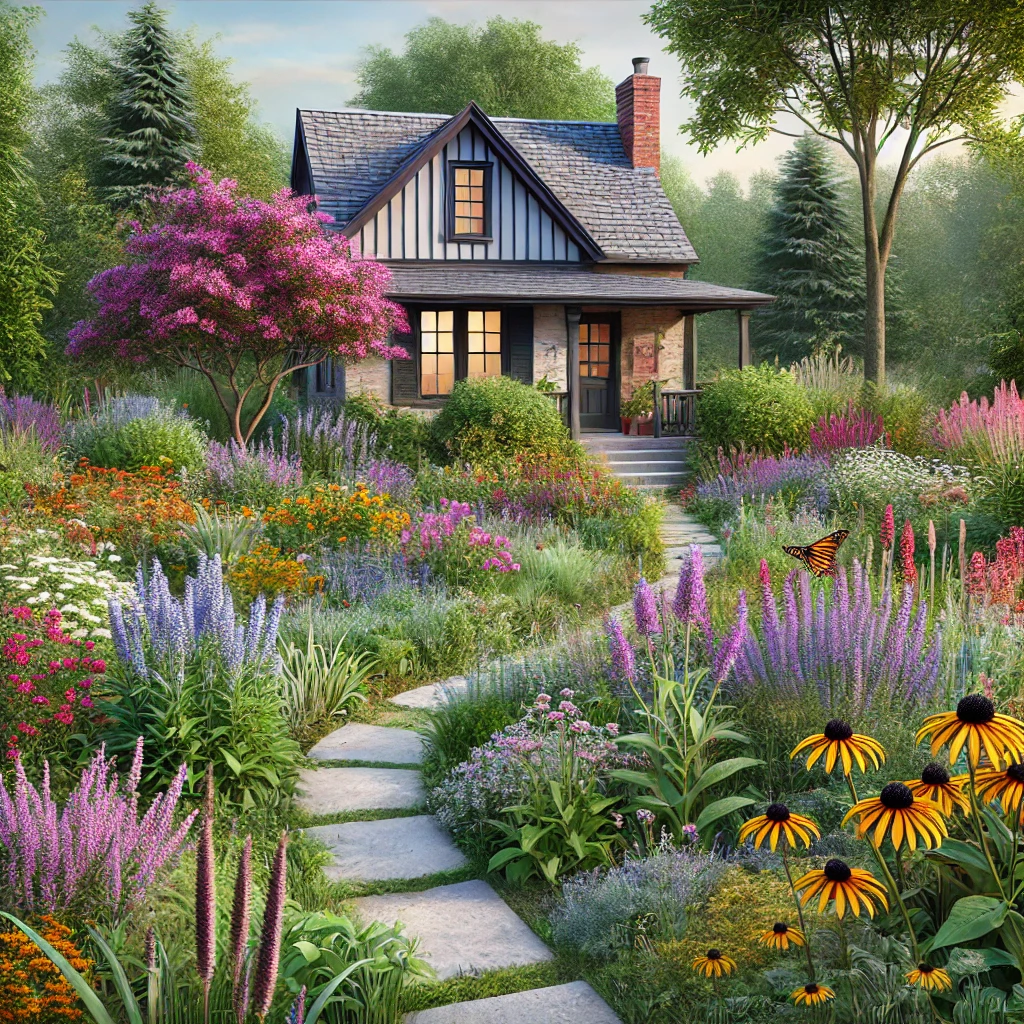Rewilding Our Gardens: The Native Plant Revolution
A garden should be more than a manicured patch of green—it should be alive. It should hum with the wings of bees, dance with the colors of butterflies, and whisper with the rustle of native grasses. But too often, our landscapes have become lifeless imitations of nature, filled with exotic plants that demand constant watering, fertilizing, and care—yet offer little to the world around them.
It’s time for a change. It’s time to rewild our gardens. 🌾✨
The answer lies in native plants—species that have thrived in our soil for millennia, forming deep, unbreakable bonds with the wildlife and ecosystems they sustain. When we invite these plants back into our yards, we do more than cultivate beauty. We rebuild lost habitats. We heal the land. We become stewards of something greater than ourselves.
The Forgotten Language of the Land 🌱
Before pavement, before monoculture lawns, before pesticides, the land spoke in a language of symbiosis—a delicate, interwoven system where plants, insects, and animals thrived together in perfect balance.
🌿 Native plants were the foundation of this system—feeding birds, sheltering small creatures, filtering rainwater, and enriching the soil.
🐝 Pollinators like bees and butterflies evolved alongside them, forming relationships so precise that many species can only survive with specific native flowers.
🌎 These plants didn’t need human intervention—they were perfectly adapted to the rhythms of the land.
But over time, we erased that language. We replaced prairies with parking lots, wild meadows with turf grass, and towering oaks with fast-growing ornamentals that provide little more than aesthetics. The result? Declining pollinators, shrinking wildlife populations, and soil depleted of life.
Yet, despite everything, nature is waiting. It only needs an invitation to return.
Why Native Plants Are the Future of Sustainable Gardening 🌾🌍
Bringing native plants back into our landscapes isn’t just about beauty—it’s about regeneration. A quiet revolution against sterile, lifeless yards. A call to action to rewild, regenerate, and reconnect.
🌱 They Bring Life Back – Native plants restore biodiversity, attracting butterflies, bees, songbirds, and even beneficial insects that help control pests naturally.
💧 They Work With Nature, Not Against It – Because they’re adapted to local conditions, native plants require little water and no chemical fertilizers. They thrive with what nature provides.
🐝 They Are Lifelines for Pollinators – Monarch butterflies depend on milkweed. Hummingbirds rely on native tubular flowers. Without native plants, entire species face collapse.
🌾 They Rebuild the Soil – Their deep root systems prevent erosion, improve drainage, and enrich the earth—creating healthier land for generations to come.
By planting native species, we aren’t just gardening. We are restoring balance. We are participating in the healing of the planet.
A New Way to Garden: Letting Nature Lead 🌸🦋
How do we begin? The key is to observe. Listen. Follow the wisdom of the land.
🌿 Step 1: Look to the Wild
Take a walk in a local forest, meadow, or prairie. What plants thrive there? Which flowers attract butterflies? Nature has already designed the perfect ecosystem—our job is to replicate it.
🌞 Step 2: Choose Native Over Ornamental
When selecting plants, resist the urge to pick whatever looks “exotic” at the garden center. Instead, choose what belongs.
✅ Wild Bergamot (Bee Balm) – A favorite of hummingbirds.
✅ Purple Coneflower – A resilient, pollinator-friendly bloom.
✅ Goldenrod – Provides late-season nectar when other flowers fade.
🌾 Step 3: Ditch the Perfect Lawn
A traditional lawn is a desert to pollinators. Instead, let part of your yard go wild. Replace sections of turf with native grasses, flowers, or even a micro-meadow.
🌻 Bonus: Let dandelions and clover bloom—they are early food sources for bees!
💧 Step 4: Work With the Land, Not Against It
Native plants don’t need chemical fertilizers, pesticides, or daily watering. Once established, they thrive on their own. Garden with patience, and let nature do what it does best.
The Future is Wild 🌍✨
Rewilding our gardens is more than an aesthetic choice—it’s a vision for the future. It’s a way to fight back against the loss of biodiversity. A way to heal ecosystems, one yard at a time. A way to transform lifeless spaces into thriving sanctuaries for pollinators, wildlife, and ourselves.
We have spent decades trying to control nature. But now, we have the chance to partner with it instead. 🌿💚
Are you ready to rewild? 🌱✨
To learn more about incorporating native plants into your space, check out resources from your local native plant society or visit a nearby botanical garden. Every plant makes a difference.
